Garmin GSD 26 Handleiding
Garmin
Niet gecategoriseerd
GSD 26
Bekijk gratis de handleiding van Garmin GSD 26 (6 pagina’s), behorend tot de categorie Niet gecategoriseerd. Deze gids werd als nuttig beoordeeld door 213 mensen en kreeg gemiddeld 4.9 sterren uit 107 reviews. Heb je een vraag over Garmin GSD 26 of wil je andere gebruikers van dit product iets vragen? Stel een vraag
Pagina 1/6

GSD™ 26 Installation Instructions
To obtain the best performance and to avoid damage to your
boat, install the device according to these instructions.
Read all installation instructions before proceeding with the
installation. If you experience difficulty during the installation,
contact Garmin Product Support.
Registering Your Device
Help us better support you by completing our online registration
today.
• Go to .http://my.garmin.com
• Keep the original sales receipt, or a photocopy, in a safe
place.
Loading the New Software on a Memory Card
The device may contain a software-update memory card. If so,
follow the instructions provided with the card. If a software
update memory card is not included, you must copy the
software update to a memory card.
1Insert a memory card into the card slot on the computer.
2Go to .www.garmin.com/support/software/marine.html
3Select next to “Garmin Marine Network with SD Download
card.”
4Read and agree to the terms.
5Select .Download
6Select .Run
7Select the drive associated with the memory card, and select
Next Finish > .
Updating the Device Software
Before you can update the software, you must obtain a
software-update memory card or load the latest software onto a
memory card.
1Turn on the chartplotter.
2After the home screen appears, insert the memory card into
the card slot.
NOTE: In order for the software update instructions to
appear, the device must be fully booted before the card is
inserted.
3Follow the on-screen instructions.
4Wait several minutes while the software update process
completes.
The device returns to normal operation after the software
update process is complete.
5Remove the memory card.
NOTE: If the memory card is removed before the device
restarts fully, the software update is not complete.
Contacting Garmin Product Support
• Go to and click www.garmin.com/support Contact Support
for in-country support information.
• In the USA, call (913) 397.8200 or (800) 800.1020.
• In the UK, call 0808 2380000.
• In Europe, call +44 (0) 870.8501241.
Important Safety Information
WARNING
See the guide in the Important Safety and Product Information
product box for product warnings and other important
information.
You are responsible for the safe and prudent operation of your
vessel. Sonar is a tool that enhances your awareness of the
water beneath your boat. It does not relieve you of the
responsibility of observing the water around your boat as you
navigate.
CAUTION
Failure to install and maintain this equipment in accordance with
these instructions could result in damage or injury.
Always wear safety goggles, ear protection, and a dust mask
when drilling, cutting, or sanding.
NOTICE
When drilling or cutting, always check what is on the opposite
side of the surface.
This equipment must be installed by a qualified marine installer.
Transducers
A transducer is required to send and receive a sonar signal from
the sounder. Proper transducer selection and installation are
critical to the operation of the device. Because mounting
locations vary, see your local Garmin dealer or contact Garmin
Product Support for more information. Go to www.garmin.com
/transducers to select a transducer.
Installation Preparation
NOTICE
This device must be installed according to these instructions to
get the best possible performance. If you experience difficulty
with the installation, contact Garmin Product Support.
Because every boat is different, you must carefully plan the
GSD 26 sounder installation.
1Select a mounting location.
2Mount the sounder.
3Connect the sounder to the Garmin Marine Network and to
power.
4Connect the sounder to the transducer.
Tools Needed
• Drill
• #8 (5 mm) drill bit for mounting surface
• 1 1/4 in. (32 mm) paddle drill bit or hole saw for mounting
surface
• #2 Phillips screwdriver
• 3 mm flat screwdriver
• Cable ties (optional)
• Wire cutter
• Wire stripper
• 1 in. (24 mm) and 19/32 in. (15 mm) wrenches
• Marine sealant (optional)
Mounting the Sounder
Mounting Location Considerations
• The sounder must be mounted in a location where it cannot
be submerged.
August 2014 Printed in Taiwan 190-01821-02_0A

• The sounder must be mounted in a location with adequate
ventilation where it will not be exposed to extreme
temperatures.
• The sounder should be mounted so that the LEDs are visible.
• The sounder should be mounted so that the power and
network cables can be easily connected.
• The sounder should be mounted so that the transducer cable
can be connected. If required, transducer extension cables
are available through your Garmin dealer.
Mounting the Device
NOTICE
If you are mounting the bracket on fiberglass with screws, it is
recommended to use a countersink bit to drill a clearance
counterbore through only the top gel-coat layer. This will help to
avoid any cracking in the gel-coat layer when the screws are
tightened.
Stainless-steel screws may bind when screwed into fiberglass
and overtightened. Garmin recommends applying an anti-seize
lubricant to the screws before installing them.
Before you mount the device, you must select a mounting
location and determine the mounting hardware needed for the
surface.
NOTE: Mounting hardware is included with the device, but it
may not be suitable for the mounting surface.
1Place the device in the mounting location and mark the
location of the pilot holes.
2Drill the appropriate pilot hole for one corner of the device.
3Loosely fasten the device to the mounting surface with one
corner and examine the other three pilot-hole marks.
4Mark new pilot-hole locations if necessary, and remove the
device from the mounting surface.
5Drill the appropriate pilot holes for the other three marks.
6Secure the device to the mounting location.
Connecting the Sounder
WARNING
When connecting the power cable, do not remove the in-line
fuse holder. To prevent the possibility of injury or product
damage caused by fire or overheating, the appropriate fuse
must be in place as indicated in the product specifications. In
addition, connecting the power cable without the appropriate
fuse in place will void the product warranty.
NOTICE
Do not force a cable into its port. Forcing the cable can damage
the pins. If the cable is properly aligned, the cable should
connect easily.
Before you connect the sounder to the network, power, and the
transducer, you must mount the sounder (Mounting the
Sounder) .
1Route the cables using the appropriate tie wraps, fasteners,
and sealant to secure the cables along the route and through
any bulkheads or the deck.
2Install the locking rings on the marine network and power
cables ( ) .Installing Locking Rings on the Cables
3Connect the bare-wire end of the power cable to a 12 Vdc
power source and to ground.
4Align the notch on the end of the power cable with the power
port on the device, and press the cable into place.
5Tighten the locking ring.
6Repeat steps 4 and 5 for the network cable, and connect the
device to a transducer (Connecting the Device to a
Transducer or Sensor) .
7Select an option:
• If your boat is equipped with a GMS 10 network port
expander, connect the network cable to an available port
on the GMS 10.
• If your boat is not equipped with a GMS 10 network port
expander, connect the network cable directly to the
network port on your chartplotter.
Cable Routing Grommets
When routing cables through your boat, it may be necessary to
drill holes to route the cables. Cable routing grommets can be
used to cover cable installation holes. You can purchase
grommets from your Garmin dealer or directly from Garmin at
www.garmin.com .
Connecting the Device to a Transducer or
Sensor
NOTICE
You must install cord grip plugs in any unused cord grip to make
sure water cannot enter the transducer wiring block area and
damage the sounder.
The terminal blocks are not removable.
Preparing the Cable
1Remove the terminal block lid from the sounder.
2Select an option:
• Feed a sensor cable through the small cord grip À, and
pull the cable into the terminal block area.
• Feed a transducer cable through one of the large cord
grips Á on the housing, and pull the cable into the
terminal block area.
NOTE: Do not tighten the cord grip.
Connecting the Wires to the Terminal Block
Before you connect the wires, consult the wiring diagrams
( ) to select the proper wiring Transducer Wiring Diagrams
configuration for your transducer and the wiring tables
( ) for specific examples of Garmin Transducer Wire Color Tables
wire colors.
1Connect the uninsulated section of each wire to the terminal
block using a 3 mm flat screwdriver.
2Connect the bare shield wire to one of the two ground posts
under the terminal block using a #2 Phillips screwdriver.
Securing the Wire Connections
1After connecting the wires, use a 24 mm (1 in.) wrench to
tighten the nut around the transducer cable.
When tightened correctly, you should not be able to pull the
transducer cable out of the housing.
2Insert a cord grip plug into each unused cord grip.
2

3Replace and secure the terminal block lid on the sounder
with a #2 Phillips screwdriver.
NOTE: The sounder does not operate when the lid is
removed.
Grounding the Sounder
The chassis ground post is located on the exterior of the
chassis, adjacent to a corner mounting hole.
1Connect the chassis ground post to the boat water ground
circuit.
2Mount the sounder ( ) and connect the Mounting the Sounder
power, marine network, transducer, and sensors (Connecting
the Sounder) .
Installing Locking Rings on the Cables
Before you install locking rings on the cables, you must route
the cables.
To help make the cable-routing process easier, the locking rings
are packaged separately from the cables. Each locking ring is
packaged in a small bag with a number on the label for easy
identification.
1Separate the two halves of the locking ring
À.
2Align the two halves Á of the locking ring over the cable and
snap them together.
3Insert the o-ring  into the end of the connector.
Transducer Wiring Diagrams
NOTICE
Connecting the high-frequency wires to the low-frequency
terminal block, or the low-frequency wires to the high-frequency
terminal block, damages the device and the transducer.
You can use these diagrams to identify the connection points for
your transducer wires on the GSD 26 terminal block. Locate
your CHIRP/spread spectrum transducer model in the wiring
color tables ( ) for more Transducer Wire Color Tables
information.
The outer shield wire must connect to one of the two screw
posts below the terminal block using the included ring crimp
terminal. When connecting two single-element transducers, you
must connect the second transducer to the duplicate set of
connections on the right side of the terminal block.
TIP: The primary transducer cable wire housing covers the
wiring bundles. To identify the wiring groups in the bundles more
easily, you can remove up to an inch of the cable housing.
Single-Element CHIRP/Spread Spectrum
Dual-Element CHIRP/Spread Spectrum with
Temperature and XID
NOTE: The temperature and XID wires can be connected at
either location.
Dual-Element CHIRP/Spread Spectrum with XID
NOTE: The XID wires can be connected at either location.
Dual-Element CHIRP/Spread Spectrum with Separate
Temperature Sensor
NOTE: The temperature and XID wires can be connected at
either location.
3
Product specificaties
| Merk: | Garmin |
| Categorie: | Niet gecategoriseerd |
| Model: | GSD 26 |
Heb je hulp nodig?
Als je hulp nodig hebt met Garmin GSD 26 stel dan hieronder een vraag en andere gebruikers zullen je antwoorden
Handleiding Niet gecategoriseerd Garmin
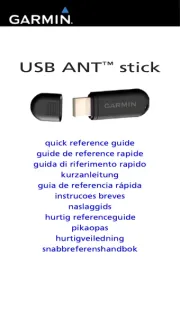
7 Mei 2025
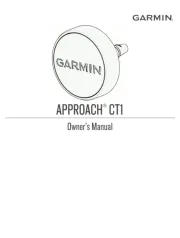
25 Februari 2025

9 Januari 2025

9 Januari 2025

14 December 2024

13 November 2024

2 Oktober 2024

23 Juli 2024

25 Juni 2024

9 Juli 2023
Handleiding Niet gecategoriseerd
- Cuisinart
- Excalibur
- ALC
- Sygonix
- Sôlt
- Intellijel
- Miele
- Pasquini
- Vimar
- Coleman
- Carson
- Black Diamond
- Kontakt Chemie
- PetRhein
- Milectric
Nieuwste handleidingen voor Niet gecategoriseerd

1 Augustus 2025
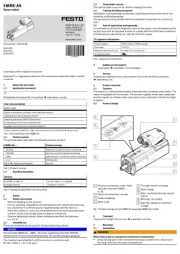
1 Augustus 2025
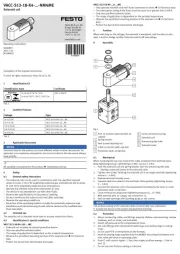
1 Augustus 2025
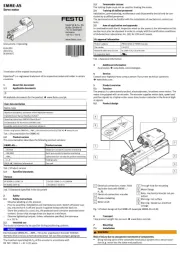
1 Augustus 2025
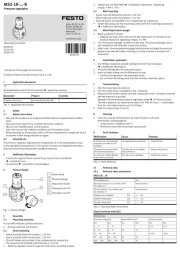
1 Augustus 2025

1 Augustus 2025
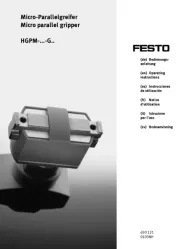
1 Augustus 2025
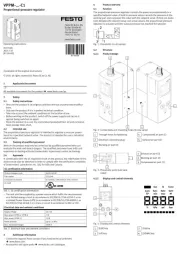
1 Augustus 2025
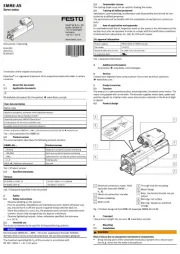
1 Augustus 2025

1 Augustus 2025